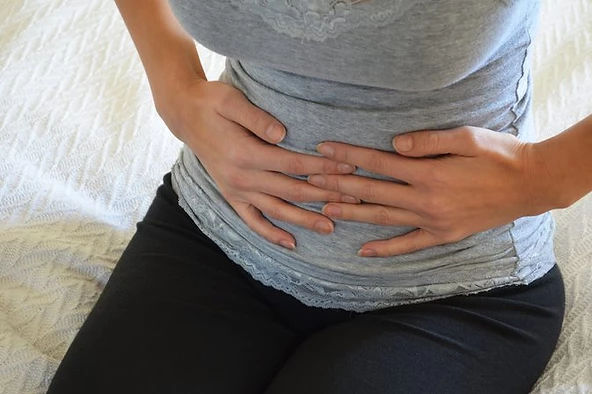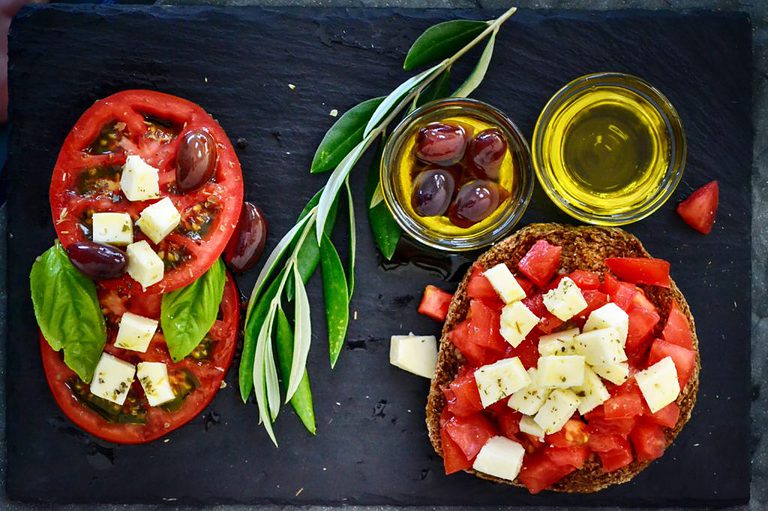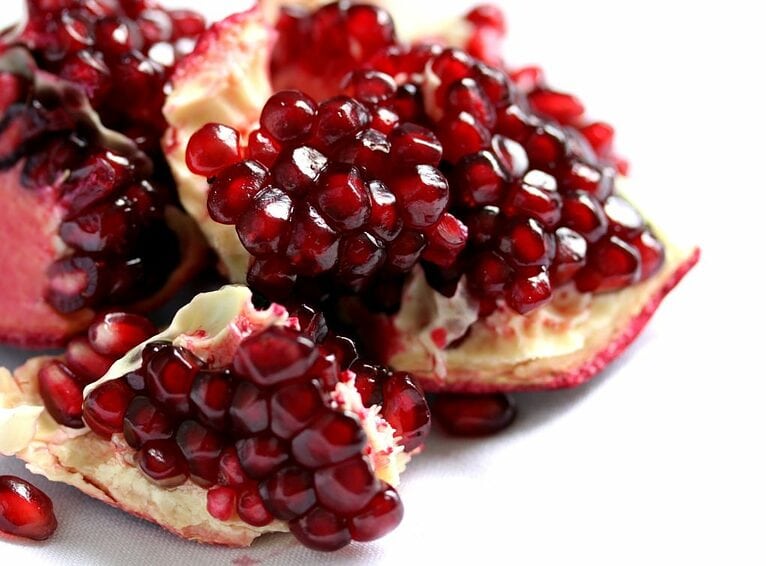The low FODMAP diet is one of the available therapeutic dietary protocols for irritable bowel syndrome (IBS) developed by Monash University. However, since its genesis, there has been more and more research into the role of the low FODMAP diet beyond medically diagnosed IBS and into other chronic conditions such as inflammatory bowel disease (IBD) and also endometriosis.
I have already done a blog on Eating for Endometriosis and Eating for Endometriosis part 2, where I briefly mentioned FODMAPs as a dietary intervention that can help with endometriosis AND IBS symptoms, but I thought I’d explore this topic in-depth a bit further.
What is IBS?
First, let’s talk about IBS. It is characterised by the symptoms of:
- Gas
- Bloating
- Abdominal pain or cramping relieved by passing wind or opening the bowels
- Constipation
- Diarrhoea
- Nausea
- Mucus in stools
It’s typically a diagnosis of exclusion, meaning they have to rule out any other causes of the above symptoms before you can be diagnosed with IBS.

IBS can be broken down into three sub-types:
- IBS-C (constipation-dominant): your bowel motions tend to the side of constipation.
- IBS-D (diarrhoea-dominant): your bowel motions tend to the side of diarrhoea.
- IBS-A (alternating or mixed): you alternate or have a mix of both constipation & diarrhoea.
What’s the link between IBS and Endometriosis?
Separately, IBS affects 15% of the population, particularly women & endometriosis affects 10% of women of reproductive age.
There is also a high co-occurrence of IBS and endometriosis, different studies report different rates but numbers within the realm of 36% and 52% have been stated in different studies (Seaman, et al., 2008 & Moore et al., 2017). This is likely due to an overlap in the symptoms of abdominal pain, which also makes them hard to separate when trying to get a diagnosis.
But, why is it that women with endometriosis are 2.5 times more likely to be diagnosed with IBS also? (Seaman et al., 2008)

Different ideas have been proposed from a mutual promotion effect (i.e. one makes the other worse) as they both have chronic low-grade inflammation in common and both typically presenting with chronic abdominal pain (Vigano, Zara & Usai, 2018).
Women with endometriosis are 2.5 times more likely to also be diagnosed with IBS
Another idea is that people with IBS and women with endometriosis both experienced visceral hypersensitivity. Meaning the area around the abdomen is especially sensitive to stimuli which are interpreted as pain by the brain, i.e. they’re more susceptible to bloating and endo belly. This contributes to experiencing a higher intensity of pain, and many women with endometriosis experience visceral hypersensitivity (Issa et al, 2014).
As emphasised in the research, a multi-disciplinary approach is required, from your gynaecologist, gastroenterologist, dietitian, GP and involving a psychologist to help development stress management strategies to help manage IBS symptoms (Vigano, Zara & Usai, 2018).
How can the low FODMAP diet help?
The low FODMAP diet is an evidence-based dietary intervention to help manage medically diagnosed IBS. It reduces the load of carbohydrates you are malabsorbing, therefore reducing the water being dragged into the large intestine and subsequently painful bloating. People with IBS tolerate a lower volume of gas in the gut compared to those without IBS (i.e. visceral hypersensitivity). So, the idea is that if you reduce the load on the gut (abdomen area where pain related to endometriosis is also experienced) then

One very exciting study last year by Moore et al. (2017) showed that 72% of New Zealand women with both IBS and endometriosis who undertook the low FODMAP diet for 4 weeks showed > 50% improvement in bowel symptoms. Bowel issues are another commonly reported symptom amongst women with endometriosis!
Woohoo, a dietary change that can help women with endometriosis and IBS! But, wait…
What is the low FODMAP diet, again?
FODMAP stands for: fermentable oligosaccharides, disaccharides, monosaccharides & polyols (a mouthful, I realise!), these include various groups of carbohydrates as well as sugar alcohols found in various foods and food groups including: fruits, vegetables, grains & cereals, dairy foods, legumes, nuts & seeds. The diet was designed by Monash University to develop personalised dietary plans to help manage the symptoms of medically diagnosed IBS.FODMAP stands for fermentable oligosaccharides, disaccharides, monosaccharides & polyols
Here is a great video from Monash University detailing how a low FODMAP diet helps with IBS.

The low FODMAP diet is comprised of 3 main phases:
(1) Substitution or the “low FODMAP” phase: usually 2-6 weeks where high FODMAP foods are substituted with those with a lower FODMAP content, with the aim of reducing IBS symptoms such as gas, bloating, diarrhoea, constipation.
IMPORTANT: if you do not experience an improvement in symptoms after 6 weeks of the low FODMAP diet, it is important to return to your normal diet and discuss with your dietitian and medical team other options to help manage your symptoms.Looking for a delicious low FODMAP recipe? Check out my delicious strawberry & coconut muffin recipe
(2) Re-challenge phase: can take 6-8 weeks, depending on responses. This phase involves systematically re-introducing foods that represent different FODMAPs, e.g. using dairy to challenge the FODMAP – lactose. This phase will help to determine which FODMAPs cause symptoms for you and also how much you can eat without triggering those symptoms (i.e. your threshold level). It is important to experience at least 3 symptom-free days before proceeding with a challenge, if you do react.
(3) Personalisation: this is where you sit down with your dietitian and develop a plan going forward of how you can maintain a healthy, nutritionally adequate diet, whilst avoiding triggering your IBS symptoms with FODMAP-containing foods. This should you give you an idea of which food/groups of FODMAP-containing foods you are sensitive too and at what “dose”. Eating FODMAP-containing foods that you are sensitive to below your own personal “threshold” will help to manage your IBS symptoms long-term.
IMPORTANT: a low FODMAP diet should be supervised by a dietitian who can help you work out how this fits into your current diet, and give you meal ideas, snack ideas and resources to help you. This diet should be attempted after a diagnosis of IBS. It is not designed nor nutritionally adequate to stay on a “low FODMAP” phase for longer than 6 weeks.
I think it is absolutely fabulous to even have a researched dietary intervention that can help women experiencing both IBS and endometriosis, any symptom relief with either condition can really improve quality of life.
Need support with a low FODMAP diet? Or want to explore how diet can help you manage your endometriosis symptoms with an expert? Get in touch with us to explore how an expert endometriosis dietitian & nutritionist can support you!
Other resources:
- The FODMAP Challenge – a fabulous dietitian-designed resource that guides you through the diet online with extra support and resources also available!
- Monash University FODMAP website – a great place to start with learning more about FODMAPs and IBS. Monash University FODMAP app – an indispensable tool when it comes to endeavouring into the world of FODMAPs, get your dietitian to show you how to use the app!
- Everyday Nutrition – created by Joanne Baker APD, a FODMAP & gut health expert, her website is loaded with resources.







